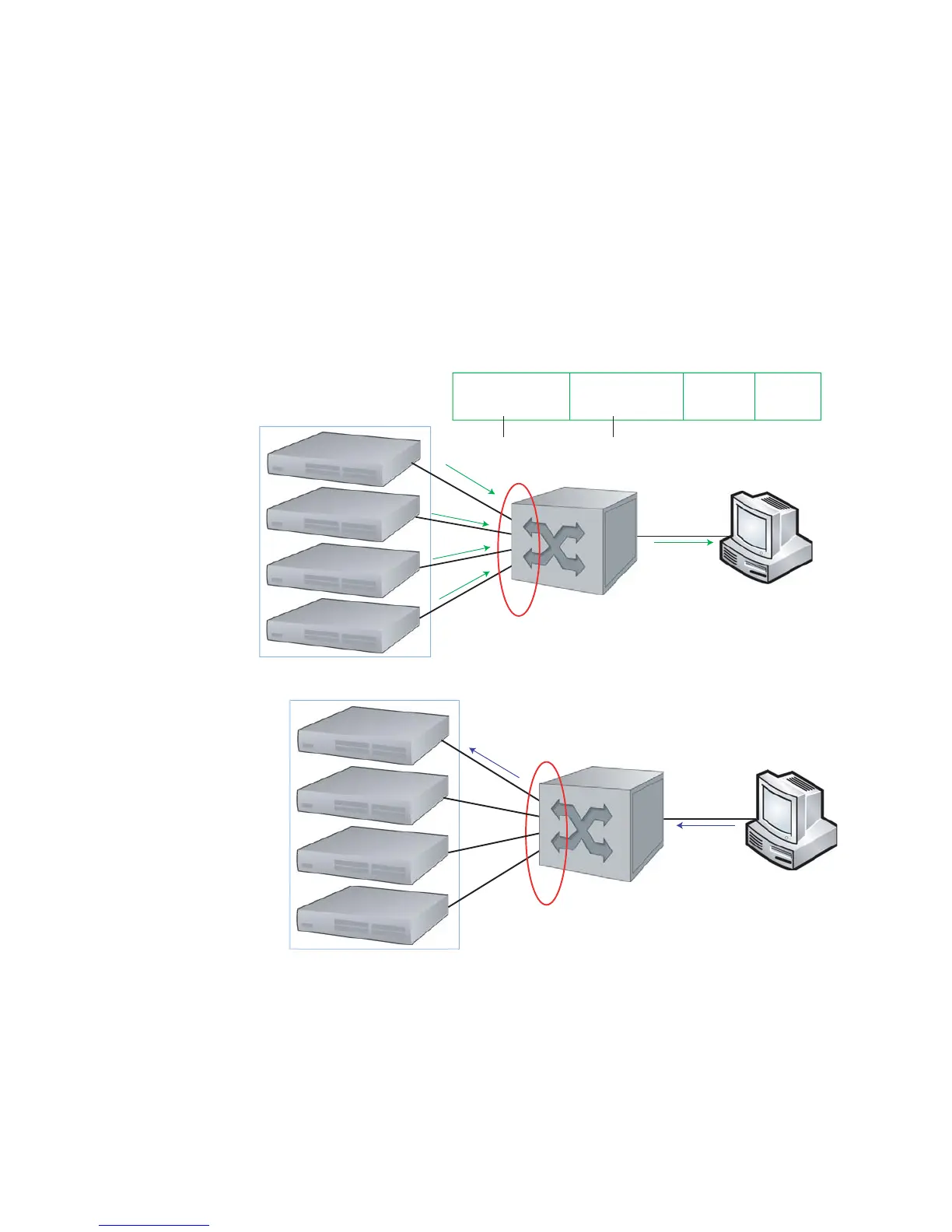630 | Layer 2
www.dell.com | support.dell.com
Default Behavior
When an ARP request is sent to a server cluster, either the active server or all of the servers send a reply,
depending on the cluster configuration. If the active server sends a reply, the Dell Force10 switch learns the
active server’s MAC address. If all servers reply, the switch registers only the last received ARP reply, and
the switch learns one server’s actual MAC address (Figure 29-3); the virtual MAC address is never
learned.
Since the virtual MAC address is never learned, traffic is forwarded to only one server rather than the
entire cluster, and failover and balancing are not preserved (Figure 29-4).
Figure 29-3. Server Clustering: Multiple ARP Replies
Figure 29-4. Server Clustering: Failover and Balancing Not Preserved
Configuring the Switch for Microsoft Server Clustering
To preserve failover and balancing, the Dell Force10 switch must learn the cluster’s virtual MAC address,
and it must forward traffic destined for the server cluster out all member ports in the VLAN connected to
the cluster. To ensure that this happens, you must configure the command
vlan-flooding on the Dell
Force10 switch at the time that the Microsoft cluster is configured (Figure 29-5).
VLAN 1
Client
Last ARP Reply
MAC
S1
Server1:
IP
S1
MAC
S2
IP
S2
Server2:
Source MAC: MAC
Cluster
Destination MAC: MAC
Client
Source IP: IP
S1
Source MAC: MAC
S1
Type: 0x0806
Pad
CRC
Ethernet Frame Header
ARP Reply
fnC0027mp
icrosoft Server Cluster:
IP
Cluster
MAC
Cluster
MAC
S3
IP
S3
Server3:
MAC
S4
IP
S4
Server4:
VLAN 1
Client
Data
fnC0028m
MAC
S1
Server1:
IP
S1
MAC
S2
IP
S2
Server2:
icrosoft Server Cluster:
IP
Cluster
MAC
Cluster
MAC
S3
IP
S3
Server3:
MAC
S4
IP
S4
Server4:

